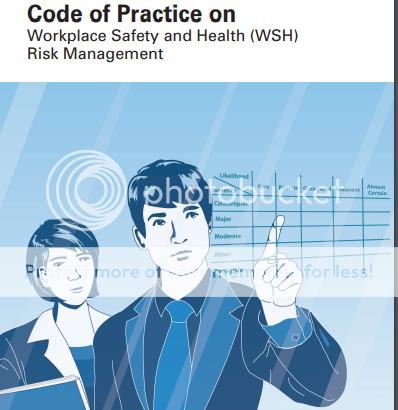As Workplace Safety and Health (WSH) Risk Management (“RM”) gains momentum in Singapore, more duty holders are beginning to recognise the value and benefits of Risk Assessment (“RA”) in maintaining a safe and healthy workplace. Duty holders and employees alike are seeking greater clarity on the implementation of RA. To address this and provide useful guidance, the WSH Council formed an industry-led RM Work Group with members from major industry sectors to develop the Code of Practice on WSH Risk Management (herein referred to as “Risk Management Code of Practice” or “RMCP”).
The RMCP advises duty holders on their obligations under the Workplace Safety and Health Act (“WSH Act”) and the WSH (Risk Management) Regulations. It also provides guidance on a systematic process for implementing RM, from the identification of hazards, and the evaluation of associated risks, to the implementation of relevant risk controls.
Much consideration has been given to make the RMCP applicable to large and small companies across industries, as the risk profiles and needs of workplaces and their methods of RM deployment differ significantly. Large companies tend to have a dedicated RM Team to oversee the consistent deployment of RM throughout the organisation. At the same time, it is also usual for these companies to have multiple RA Teams to look at specific risks or work processes. The RMCP offers clarity in the roles of the different teams and/or individuals.
Smaller companies, on the other hand, often need specific guidance in implementing RM. To assist this segment, the RMCP defines stakeholders’ responsibilities and provides information on RM implementation. The RMCP also recommends the 5x5 risk matrix for risk evaluation; however, it does not restrict companies to their choice of RA methodologies and risk matrices.
In the second revision, the principles of RM were introduced so that companies can implement RM more effectively. Human and cultural factors (referred to as “personal health risks and organisation factors” in the third revision) influence RAs and should be considered when companies conduct RAs. The revised RMCP also recommends some possible roles that a human resource manager could play to complement those other duty holders for a holistic RM.
In view of a heightened awareness of occupational health hazards in the industry, the risk evaluation of health hazards is included to enhance the overall assessment of workplace hazards. Upstream risk controls in the hierarchy of control, for example, from elimination and substitution to engineering controls, are emphasised for their relative importance in managing workplace risks.
In the third revision, considerations of our workplaces’ preparedness for terrorism threats, disease outbreaks, and mental well-being are introduced. The threat of terrorism is real and present. Included in this RMCP is the Singapore WSH Community’s response to this threat that Singapore faces and is a requirement under WSHC’s bizSAFE programme. Living with COVID-19 has also reinforced the need to mitigate infectious disease transmission risk in the workplace. The growing risk to mental well-being, already present in pre-COVID times but now exacerbated by the pandemic, also behoves companies to update their RM processes to account for mental health.
To download click CP Risk Management 3rd edition


